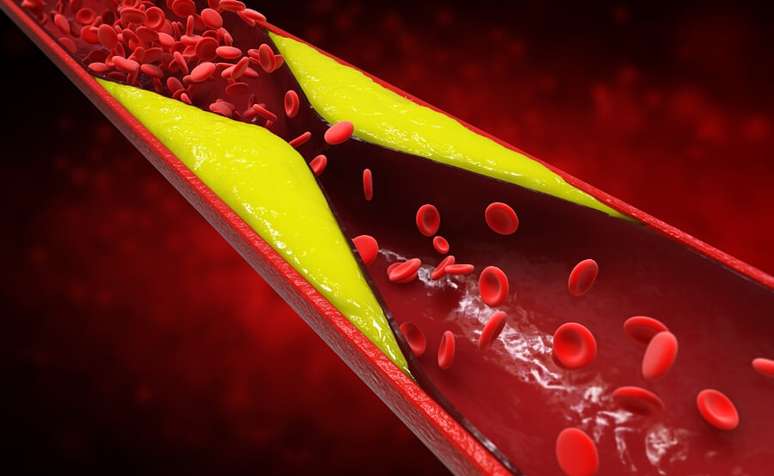The two types of cholesterol, LDL and HDL, have specific properties and are risk factors for cardiovascular disorders and diseases.
Summary
Excess cholesterol in the blood significantly increases the risk of cardiovascular disease, as well as the age group of Brazilian children and adolescents are already at risk due to their diet rich in fatty foods.
According to the Brazilian Society of Cardiology (SBC), an increasingly sedentary lifestyle with a diet high in fatty foods is one of the main factors why approximately 40% of adults in Brazil are diagnosed with high cholesterol. According to studies by UFMG, an excess of cholesterol in the body can increase the risk of cardiovascular diseases, such as acute myocardial infarction, stroke and peripheral arterial disease, and puts the health of 27.4% of Brazilian children and adolescents at risk.
The risks of having high blood cholesterol include a significantly increased risk of cardiovascular disease, such as coronary heart disease, which can lead to angina (chest pain) and even a heart attack. Additionally, high cholesterol is associated with a greater risk of stroke, peripheral arterial disease, renal artery disease, and erectile dysfunction in men.
“It is essential to control cholesterol levels through a balanced diet, regular exercise, avoiding smoking and excessive alcohol consumption, as well as carrying out periodic tests to monitor cardiovascular health, including children and young people, an age group susceptible to consumption high amount of processed foods, foods with a high fat content,” explains cardiologist Luiz Guilherme Velloso, from the São Camilo hospital network in São Paulo, and professor of cardiology at the São Camilo University Center.
Genetic inheritance
High cholesterol can also be related to genetic inheritance, as in the case of familial hypercholesterolemia (FH), which prevents the liver from removing excess low-density lipoprotein, LDL, popularly known as “bad” cholesterol. It usually has no specific symptoms.
“High cholesterol does not cause symptoms, even when it is very high, which makes it a particularly dangerous risk factor,” comments the expert.
High cholesterol only causes symptoms when the arteries are already blocked.
Cholesterol is no longer healthy when the blood level is above 200 milligrams per deciliter of blood (mg/dl) in adults. A total cholesterol level of less than 200 mg/dL is desirable, but many people benefit from maintaining even lower lipid levels.
Good and bad cholesterol
Observing the level of bad cholesterol is more important than the level of total cholesterol. A high level of LDL cholesterol increases the risk of atherosclerosis, while the presence of high levels of high-density lipoprotein (HDL), called “good” cholesterol, may provide greater protection against blocked arteries.
On the other hand, the presence of a low level of HDL cholesterol (less than 40 mg/dl) is also associated with an increased risk of atherosclerosis. The risk of heart attack is more than double when the total cholesterol level approaches 300 mg/dl.
“It is important to emphasize that cholesterol itself is not harmful, but rather an essential lipid in the formation of the membrane of all cells in the body. LDL and HDL must be balanced, within their normal ranges. With a healthy lifestyle and, in some cases, with the help of drugs such as statins, it is possible to control cholesterol and improve the quality of life,” concludes Velloso.
inspires transformation in the world of work, in business, in society. Compasso, a content and connection agency, is born.
Source: Terra
Ben Stock is a lifestyle journalist and author at Gossipify. He writes about topics such as health, wellness, travel, food and home decor. He provides practical advice and inspiration to improve well-being, keeps readers up to date with latest lifestyle news and trends, known for his engaging writing style, in-depth analysis and unique perspectives.





![Tomorrow belongs to us: What awaits you in the episodes of 2052 and 2053 on October 15, 2025 [SPOILERS] Tomorrow belongs to us: What awaits you in the episodes of 2052 and 2053 on October 15, 2025 [SPOILERS]](https://fr.web.img6.acsta.net/img/39/95/3995a2d00abbf3c01161818d01a95388.jpg)



